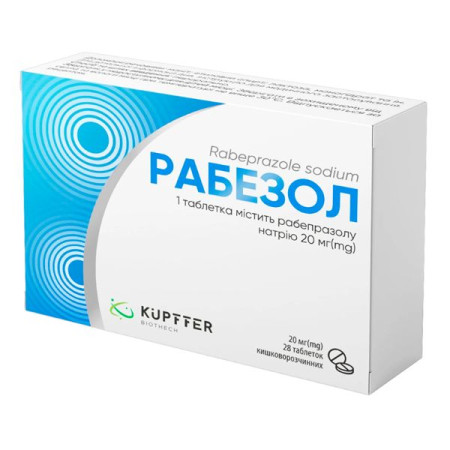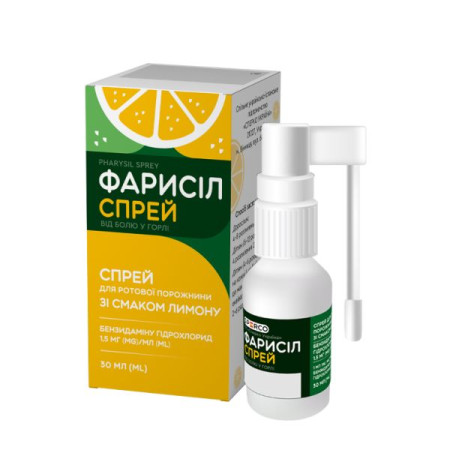Fervex for children powder for oral solution sachet No. 8

Instructions Fervex for children powder for oral solution sachet No. 8
Composition
active ingredients: paracetamol, ascorbic acid (vitamin C), pheniramine maleate;
1 sachet contains paracetamol 280 mg, ascorbic acid (vitamin C) 100 mg, pheniramine maleate 10 mg;
excipients: mannitol (E 421), anhydrous citric acid, povidone, anhydrous trimagnesium dicitrate, acesulfame potassium, raspberry flavoring containing yellow-orange dye S (E 110).
Dosage form
Powder for oral solution.
Main physicochemical properties: Granulated powder from light pink to dark pink in color, small dark particles may be observed.
Pharmacotherapeutic group
Other combination medicines used for colds.
ATX code N02B E51.
Pharmacological properties
Pharmacodynamics.
Pharmacological effects caused by the components of the drug:
pheniramine maleate – a blocker of H1-histamine receptors, provides a desensitizing effect, which is manifested by a decrease in the inflammatory reaction of the mucous membranes of the upper respiratory tract (nasal breathing improves, rhinitis, sneezing and lacrimation decrease);
Paracetamol has an antipyretic and analgesic effect, which relieves pain and fever (headache, myalgia);
Ascorbic acid compensates for the body's needs for vitamin C.
Pharmacokinetics.
Paracetamol after oral administration is rapidly and almost completely absorbed from the gastrointestinal tract. The maximum concentration of paracetamol in the blood plasma is reached 30-60 minutes after administration. Paracetamol is rapidly distributed in all tissues. Concentrations in blood, saliva and plasma are similar. Binding to plasma proteins is weak.
Paracetamol is metabolized mainly in the liver with the formation of compounds with glucuronic acid and sulfates. A secondary metabolic pathway, catalyzed by cytochrome P 450, leads to the formation of an intermediate reagent (N-acetylbenzoquinoneimine), which under normal conditions of use is rapidly neutralized by reduced glutathione and enters the urine after conjugation with cysteine and mercapturic acid. However, in severe poisoning, the amount of this toxic metabolite increases.
Excreted in the urine, mainly as metabolites. 90% of the dose taken is excreted by the kidneys within 24 hours, mainly in the form of glucuronide conjugates (60-80%), sulfate conjugates (20-30%).
Approximately 5% of the dose is excreted unchanged. The half-life is approximately 2 hours.
Pheniramine maleate is well absorbed from the gastrointestinal tract. It is excreted mainly by the kidneys. The half-life in plasma is 60-90 minutes.
Ascorbic acid is well absorbed in the digestive tract. It is excreted mainly in the urine.
Indication
Symptomatic treatment of colds, rhinopharyngitis in children (aged 6 years and older) and conditions manifested by runny nose, lacrimation, sneezing, fever and/or headache.
Contraindication
Hypersensitivity to the components of the drug or to other antihistamines, severe liver and/or kidney dysfunction, phenylketonuria, congenital hyperbilirubinemia, glucose-6-phosphate dehydrogenase deficiency, alcoholism, blood diseases, severe anemia, leukopenia, severe arterial hypertension, unstable angina; severe cardiac conduction disorders, acute myocardial infarction, severe atherosclerosis, uncompensated heart failure, hyperthyroidism, acute urinary retention in prostatic hypertrophy, bladder neck obstruction, pyloroduodenal obstruction, gastric and duodenal ulcer in the acute stage, angle-closure glaucoma, thrombosis, thrombophlebitis, epilepsy, severe forms of diabetes mellitus. Do not use together with MAO inhibitors and within two weeks after stopping the use of MAO inhibitors. Contraindicated in patients taking tricyclic antidepressants or beta-blockers. Urolithiasis - provided that ascorbic acid enters the body in a dose of more than 1 g per day.
Children's age up to 6 years.
Interaction with other medicinal products and other types of interactions
Precautions.
The use of sedatives (especially barbiturates) increases the sedative effect of pheniramine maleate, therefore, the use of such combinations during treatment should be avoided.
Undesirable combinations.
Due to the presence of pheniramine, ethanol increases the sedative effect of H1-blockers, therefore, during treatment, the use of medicines containing ethyl alcohol should be avoided.
Combinations to consider.
Due to the presence of pheniramine, drugs that have atropine-like effects, such as: imipramine antidepressants, most atropine H1-blockers, anticholinergics, antiparkinsonian drugs, atropine antispasmodics, disopramide, phenothiazine neuroleptics and clozapine, may add undesirable atropine-like effects, such as urinary retention, constipation and dry mouth.
When taken simultaneously with oral anticoagulants, there is a risk of their enhanced effect and an increased risk of bleeding when taking paracetamol in maximum doses.
(4 g/day) for at least 4 days. INR (international normalized ratio) should be checked regularly. If necessary, the dose of oral anticoagulant can be adjusted during and after paracetamol treatment.
Taking paracetamol may affect the results of blood glucose determination using the glucose oxidase-peroxidase method with abnormally high concentrations.
Taking paracetamol may affect the results of blood urea determination using the phosphotungstic acid method.
The rate of absorption of paracetamol may be increased by concomitant use with metoclopramide and domperidone and decreased by co-administration with cholestyramine. Barbiturates reduce the antipyretic effect of paracetamol.
Anticonvulsants (including phenytoin, barbiturates, carbamazepine), which stimulate the activity of liver microsomal enzymes, may enhance the toxic effect of paracetamol on the liver due to an increase in the degree of conversion of the drug to hepatotoxic metabolites. With simultaneous use of paracetamol with isoniazid, the risk of developing hepatotoxic syndrome increases. Paracetamol reduces the effectiveness of diuretics.
Do not use simultaneously with alcohol.
Ascorbic acid increases the absorption of iron in the intestine, increases the level of ethinyl estradiol, penicillins, tetracyclines; reduces the level of antipsychotics, phenothiazine derivatives in the blood. Glucocorticosteroids reduce the reserves of ascorbic acid. Simultaneous administration of ascorbic acid and deferoxamine increases the tissue toxicity of iron, especially in the heart muscle, which can lead to decompensation of the circulatory system. It can be used only 2 hours after the injection of deferoxamine. Large doses of ascorbic acid reduce the effectiveness of tricyclic antidepressants. Absorption of ascorbic acid is reduced with simultaneous use of oral contraceptives, consumption of fruit or vegetable juices, alkaline drinks.
Caution should be exercised when using paracetamol and flucloxacillin simultaneously, as concomitant administration is associated with metabolic acidosis with a high anion gap, especially in patients at risk ("Special warnings and precautions for use").
Application features
In case of high body temperature or prolonged fever that persists for 3 days while using the drug, or if signs of superinfection appear, you should consult a doctor to determine the appropriateness of further use of the drug.
Alcohol enhances the sedative effect of pheniramine maleate and the hepatotoxicity of paracetamol.
Ascorbic acid may alter the results of laboratory tests (glucose, blood bilirubin, transaminase activity).
The risk of mainly psychological dependence appears when recommended doses are exceeded and with long-term treatment.
To prevent overdose, all medications containing paracetamol should be checked and excluded.
Caution is advised when paracetamol and flucloxacillin are used concomitantly due to the increased risk of developing metabolic acidosis with a high anion gap, especially in patients with severe renal insufficiency, sepsis, malnutrition and other sources of glutathione deficiency (e.g. chronic alcoholism), as well as those taking maximum daily doses of paracetamol. Close monitoring, including measurement of urinary 5-oxoproline, is recommended.
This medicine contains an azo dye (E110) which may cause allergic reactions.
Maximum recommended doses
children weighing less than 37 kg: the total dose of paracetamol should not exceed 80 mg/kg body weight per day;
children weighing 38 kg to 50 kg: the total dose of paracetamol should not exceed 3 g/day;
Children weighing more than 50 kg: the total dose of paracetamol should not exceed 4 g/day.
Use during pregnancy or breastfeeding
The drug in this dosage form should only be used in children.
Ability to influence reaction speed when driving vehicles or other mechanisms
The drug in this dosage form should only be used in children.
Method of administration and doses
For oral use. Dissolve the contents of the sachet in a sufficient amount of cold or warm water.
This form of release is intended for use only in children (age 6 and older):
6-10 years old – 1 sachet twice a day.
10-12 years old – 1 sachet 3 times a day.
12-15 years old – 1 sachet 4 times a day.
The interval between doses should be at least 4 hours. The maximum duration of treatment is 3 days.
If the symptoms of the disease do not disappear or worsen, a doctor's consultation is required.
Children.
The drug should be used in children aged 6 to 15 years.
Overdose
Related to pheniramine.
Overdose of pheniramine can cause convulsions, impaired consciousness, and coma.
Related to paracetamol.
There is a risk of intoxication, especially in young children (cases of therapeutic overdose and accidental poisoning occur quite frequently).
An overdose of paracetamol can be fatal.
Symptoms:
Nausea, vomiting, anorexia, pallor, increased sweating, abdominal pain, which usually appear within the first 24 hours.
Paracetamol overdose of more than 150 mg/kg body weight per dose in children causes hepatic cytolysis, which can lead to complete and irreversible necrosis and hepatocellular failure, metabolic acidosis, encephalopathy, which, in turn, can lead to coma and death.
At the same time, elevated levels of hepatic transaminases, lactate dehydrogenase, and bilirubin are observed against the background of elevated prothrombin levels, which may appear 12-48 hours after administration.
Urgent measures:
immediate hospitalization;
determination of the initial level of paracetamol in blood plasma;
immediate removal of the used drug by gastric lavage;
The usual treatment for overdose includes the administration of the antidote N-acetylcysteine, either intravenously or orally. The antidote should be administered as soon as possible, preferably within 10 hours of the overdose;
methionine as symptomatic therapy.
Adverse reactions
From the hematopoietic and lymphatic system: anemia, sulfhemoglobinemia and methemoglobinemia (cyanosis, shortness of breath, heart pain), hemolytic anemia; thrombosis, hyperprothrombinemia, erythrocytopenia, thrombocytopenia, agranulocytosis, neutrophilic leukocytosis, purpura, leukopenia, neutropenia.
On the part of the immune system: anaphylaxis, anaphylactic shock, skin hypersensitivity reactions, including itching, rash on the skin and mucous membranes (usually erythematous, urticaria), angioedema, erythema multiforme (including Stevens-Johnson syndrome), toxic epidermal necrolysis (Lyell's syndrome).
Respiratory system: bronchospasm in patients sensitive to acetylsalicylic acid and other NSAIDs.
On the part of the digestive system: dry mouth, nausea, heartburn, vomiting, constipation, epigastric pain, diarrhea, impaired liver function, increased activity of liver enzymes, usually without the development of jaundice, hepatonecrosis (dose-dependent effect).
From the endocrine system: hypoglycemia up to hypoglycemic coma.
From the nervous system: rarely - headache, dizziness, sleep disturbances, insomnia, drowsiness, confusion, hallucinations, nervousness, tremor; in some cases - coma, convulsions, dyskinesia, behavioral changes, increased excitability; impaired balance and memory, inattention.
Cardiovascular system: in rare cases - tachycardia, myocardial dystrophy (dose-dependent effect with prolonged use), orthostatic hypotension.
Metabolic disorders: zinc and copper metabolism disorders.
On the part of the urinary system: urinary retention and difficulty urinating, aseptic pyuria, renal colic.
Skin: eczema.
From the organs of vision: dry eyes, mydriasis, accommodation disorders.
With prolonged use in large doses: damage to the glomerular apparatus of the kidneys, crystalluria, formation of urate, cystine and/or oxalate stones in the kidneys and urinary tract; damage to the insular apparatus of the pancreas (hyperglycemia, glucosuria) and impaired glycogen synthesis up to the development of diabetes mellitus.
Expiration date
3 years.
Storage conditions
Store at a temperature not exceeding 25 °C in a place inaccessible to children.
Packaging
8 sachets in a cardboard box.
Vacation category
Without a prescription.
Producer
UPSA SAS, France.
Location of the manufacturer and address of its place of business
304, avenue du Docteur Jean Bru, 47000 Agen, France;
979, avenue des Pyrenees, 47520 Le Passage, France.
There are no reviews for this product.
There are no reviews for this product, be the first to leave your review.
No questions about this product, be the first and ask your question.















